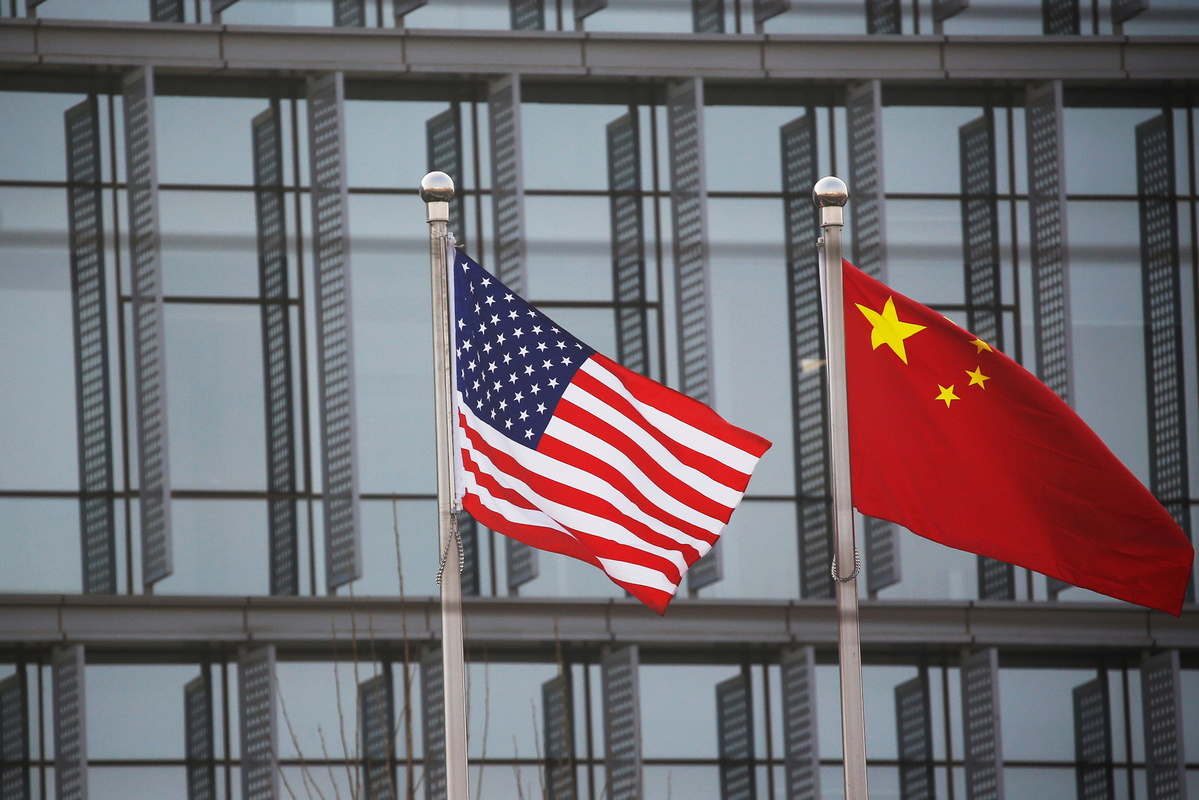Caught Between America And China, The IMF Finds Itself In The Midst Of A Tussle And Losing Its Very Identity!
IMF, which was founded with the aim of ensuring macroeconomic stability, has since its 80 years has lent nearly $700bn to 150 countries, but today it is in the midst of a power struggle - America Vs China and increasingly, it faces an identity crisis like never before and an unclear purpose.

The IMF is all set for its meeting on April 10th; however, this time, the festivities may not be in order as is the usual case since the Sino-American rivalry now ensnares the fund.
The IMF was created after the second world war; countries negotiate and vote on the fund’s governance; the main aim is to lend to countries that require financial assistance, and during the covid 19 crisis, the IMF was facilitated by $185bn, the amount it managed to raise from central banks to lend to distressed economies. Hence it was fulfilling its modern mission: to help countries in distress and, by extension, the world economy.
However, in the present, the role of the IMF is increasingly becoming debatable as identity crises grip its future functions.
The IMF has been hit by the very thing it was created for –
For example, during the Covid pandemic, nearly $1trn had been injected into the fund, but its loan book has grown by only $51bn; however, poor nations have struggled through the pandemic
The fund has approved just $2bn, or 5% of the capital it raised for new lending facilities, to tackle a wide range of problems from climate change to food shortages; however, even this money is yet to exit its accounts.
Three factors explain the IMF’s struggles:
- The Chinese creditors have taken the ball in their court as they continue to lend to poor countries.
- The perilous state of middle-income countries, such as what is happening in Pakistan now or what happened in Sri Lanka, for which loans are as much about geopolitics as economics.
- The IMF’s inability to execute a plan, pushed by its leadership (America), to use resources for less diplomatically controversial purposes, such as big-ticket climate loans and health policies.
Let us break this down a bit –
Chinese creditors cause problems when the IMF approaches debt restructuring. Before IMF can lend, it must be sure that a country’s borrowing is sustainable.
This usually requires an agreement to restructure existing debts. Over the past 20 years, China’s rise as a big lender has made this impossible. Currently, almost 65 countries owe China more than 10% of their external debt, and many are now in deep waters.
Now when a government seeks restructuring, it means it is already in dire straits; reserves have run dry, capital is in flight, and inflation is spiralling; hence if they are not able to restructure in time, the more difficult it will get for them.
At least seven of the 21 troubled countries have been waiting more than a year for a deal since defaulting, and Ethiopia has had to wait over two years for restructuring without receiving a dollar from the IMF. Other countries, including Suriname and Zambia, have secured IMF packages but need help to unlock the bulk of their funds because China is blocking restructuring.

Anti-China alliance
The thing is, when it comes to Western creditors, they would want to be sure they are not bailing out Chinese creditors.
IMF is dominated by America, which holds 17% of voting rights in a system requiring 85% agreement; thus, in theory, the institution runs to rules agreed upon at a table where all nations may sit.
The (American) norm is countries receiving loans “into arrears” would, in effect, have to promise to default on Chinese loans and not borrow from China again anytime soon, or else they will have to lose access to the IMF.
IMF’s second problem concerns middle-income repeat offenders, to which IMF has increasingly grown reluctant to lend owing to their inability to follow through on reforms.
Take the example of Pakistan, for instance; since 2000, the country has spent 14 out of 23 years in some form of IMF emergency triage under a total of seven lending programmes, three of which it has yet to repay.
The country has yet to complete a single course of fiscal conditions from any deals. Its leaders have been asked to collect local taxes 17 times and reform the same sales tax in every check-up the fund has done.
Pakistan is one of many laggards; Egypt has hosted four programmes in under a decade. Argentina, the worst offender, has had to fudge targets in its most recent bail-out, worth $44bn and granted last year.
The three now comprise more than half of the fund’s general resources account lending.

The fund’s third problem is several causes it spearheads ranging from gender equality to fragile societies. Few relate to the fund’s mandate to help solve countries’ balance-of-payment problems and watch over global economic stability.
But in the past few years, as the IMF has struggled to do its day job, it has become more serious about its side gigs. The fund is now banking on them to kick-start lending.
America’s de-facto veto over the IMF board, which has the final say on which countries receive money, means Washington has always swayed the fund.
In 1995, under pressure from America, the fund pushed Japan to agree to a generous bail-out for Mexico, meaning America’s allies benefit.
The fund bailed out Greece, Ireland and Portugal under pressure from France, Germany and the European Central Bank (all of which could have done more instead) with then-record packages in the early 2010s.
However, IMF and China have started to become competitors, and so have Sino-American competition, which would nevertheless be a downer for an institution that is apparently a bastion of liberal universalism.
Either way, the fund probably needs to shrink for a simple reason: underlying demand for emergency loans is falling. Emerging markets such as Brazil and Thailand have spent years building up reserves and swap lines to avoid the fund’s clutches.
They have deep domestic markets for local debt, which they turn to when they get into trouble and which the IMF cannot restructure when loans go bad. Increasingly, they have friends to borrow from, too.

IMF Crises Or Is It In One?
Therefore the IMF looks less likely than ever to deal with a widespread emerging-market crisis that threatens global financial stability.
Supporting poor countries for humanitarian purposes is considerably cheaper than propping up countries like Argentina. If the IMF were to apply a more geopolitical filter to its lending, demand would still be smaller.
Conclusion: IMF’s initial purpose was to ensure a system of stable exchange rates and the “balanced growth of international trade”. However, throughout the cold war, it lent to rich countries to prop up the Bretton Woods system of fixed exchange rates. The IMF only lent to countries in the early 1970s, and emergency lending only got going in the mid-1980s, when the Soviet Union was in too much trouble at home to pay attention.
Thus the IMF today finds itself unable to escape the American-born, American-dominated institution that finds itself as the property of all nations.




